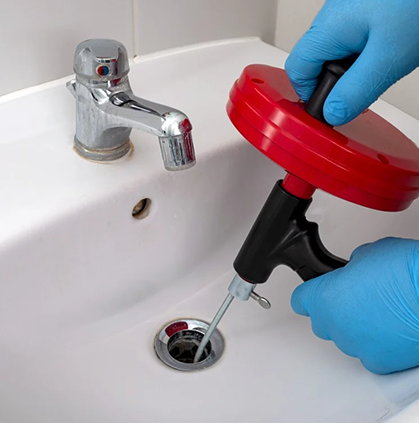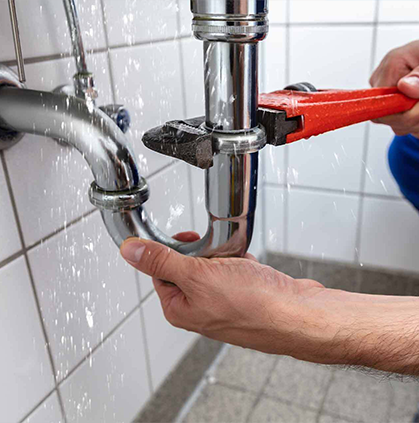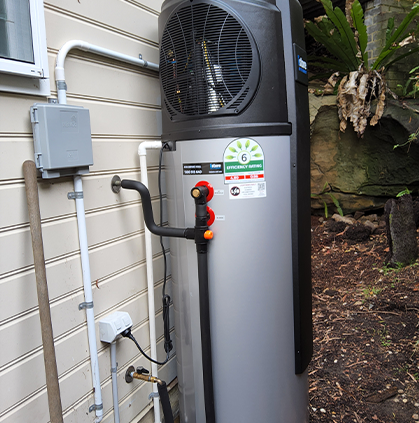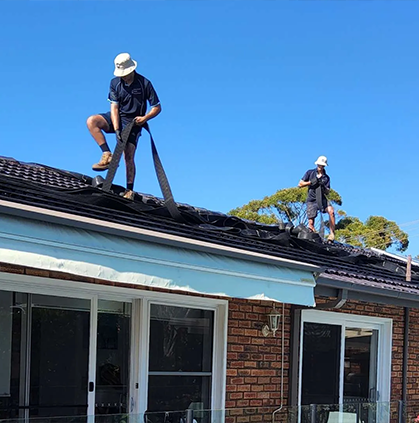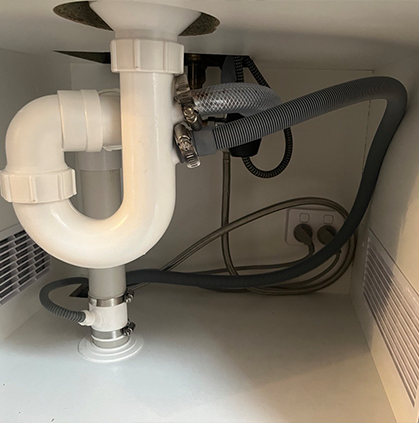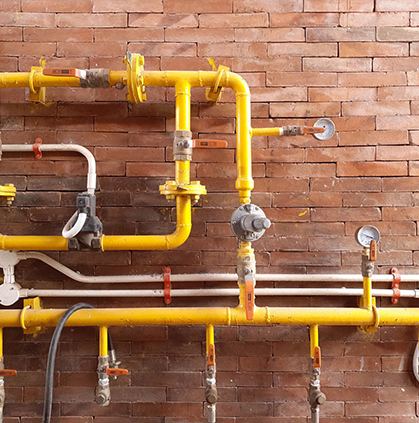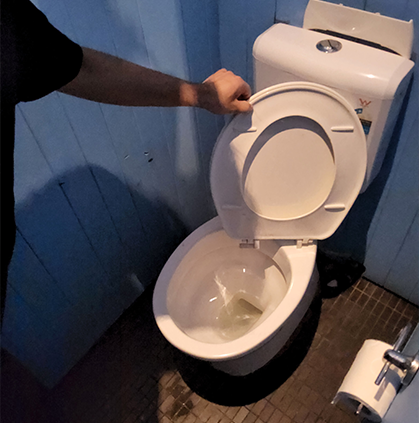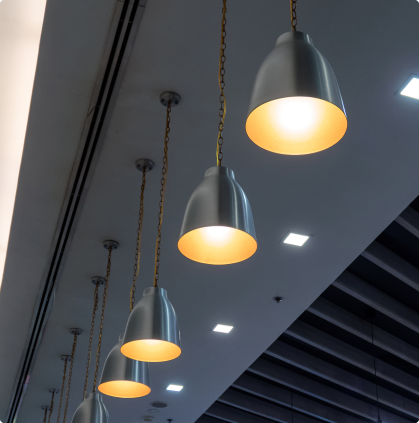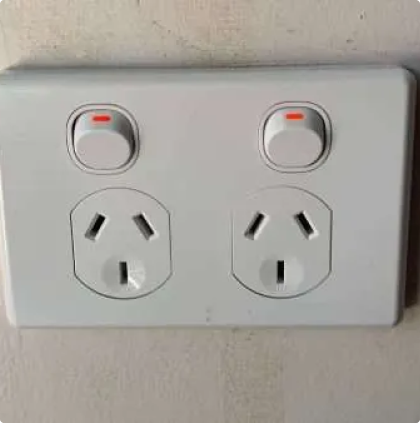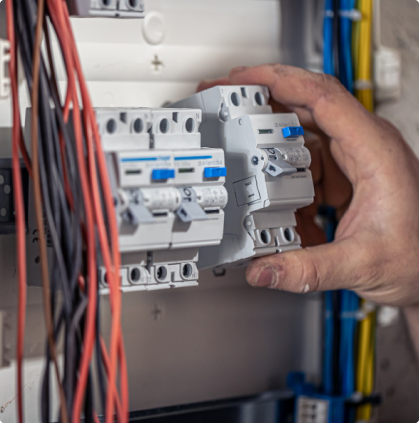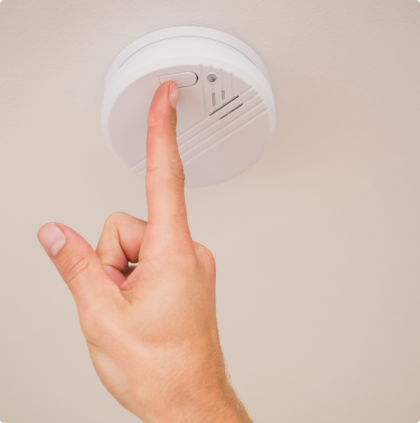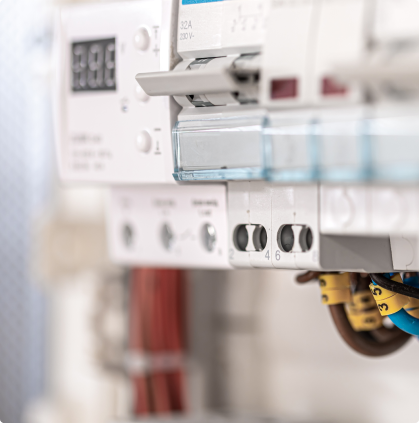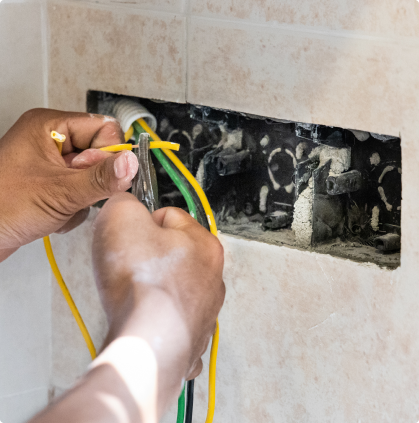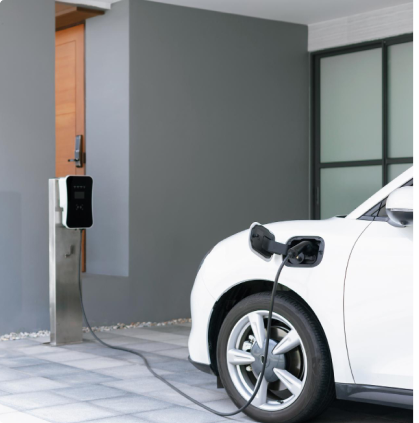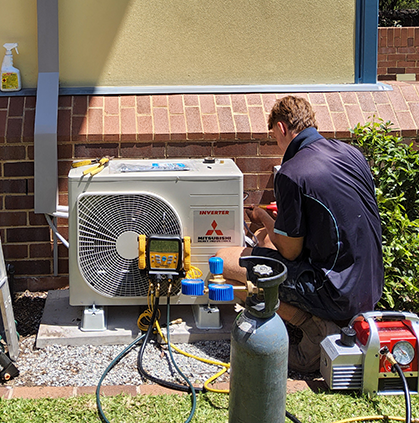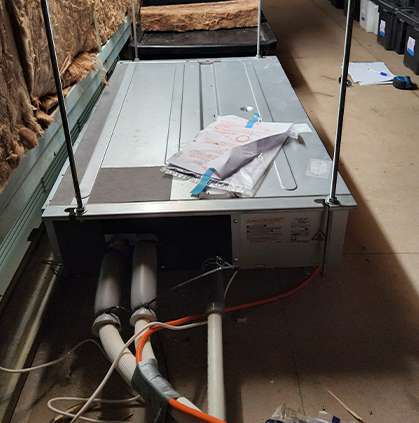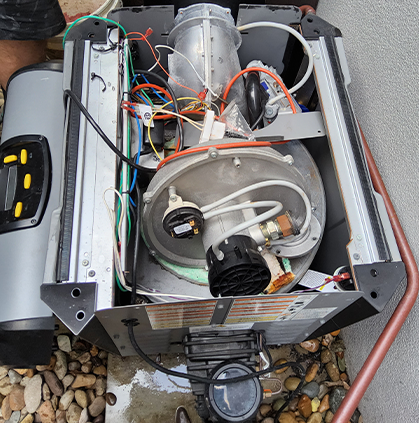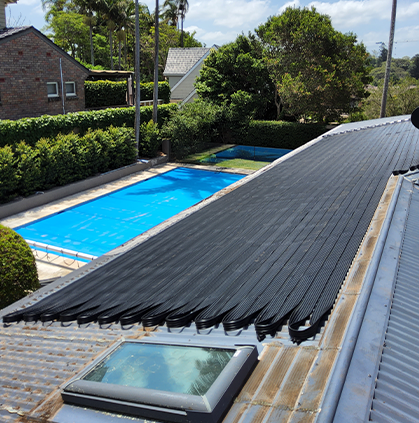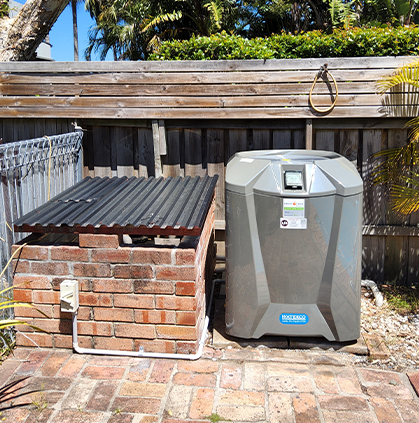How does a heat pump work is not just a question that gets thrown around in a science class. According to SwitchedOn, the first half of 2023 recorded a 70% hike in heat pump installations. Australian homes are not only embracing an all-electric future, but also warmer showers.
Sure, a heat pump is a wonderful innovation. But just like microwaved meals, at times, it goes from hot to cold without notice. Irregular temperature is just one sign of a heat pump needing repair.
So, if you want your heat pump to keep your home comfy all seasons long, you need to understand how it works.
Components of a Heat Pump and How They Work
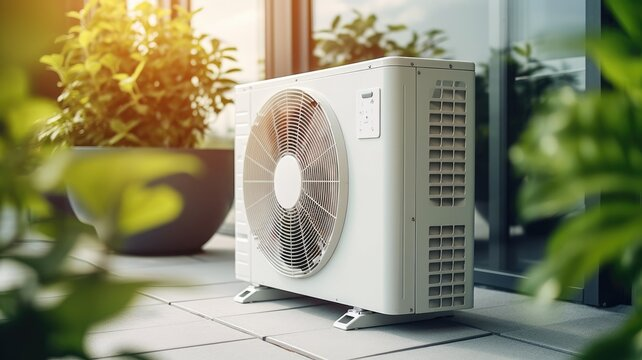
If you’re quick on time, check out the details on every component of a heat pump in the table below.
| Heat Pump Components | Definition | What It Does |
| Compressor | The “heart” of the system. A motor-driven pump that circulates and compresses refrigerant. | It raises the pressure and temperature of the refrigerant to release heat into or outside of your home. |
| Reversing Valve | A 4-way valve that can change the direction of the refrigerant flow. Only available in heating and cooling systems. | Thanks to the switch, the heat pump can work in any direction, hot or cold. |
| Indoor Heat Exchanger or Coil | An evaporator coil made of tubes and fins, usually accompanied by a fan inside the building. | Its main purpose is heat exchange. In cooling mode, it absorbs heat and moisture from the indoor air to lower the room temperature and humidity. In heating mode, it sucks heat from the outdoors and transfers that air indoors. This process enables temperature balance. |
| Outdoor Heat Exchanger or Coil | An HVAC component found outside the building. | In cooling mode, it acts as a condenser or a hot refrigerant that rejects heat outdoors. In heating mode, it acts as an evaporator, where its cold refrigerant absorbs heat from the outside air, water, and ground and boils into vapor. |
| Expansion Valve | A thermal or electronic metering device that is placed before the evaporator. Multiple valves might be used together with non-return or bypass valves. | It drops the pressure and temperature in the liquid refrigerant. The result is a cold part-liquid, part-vapor mixture that is ready to absorb heat. |
| Filter Drier | A bi-directional cartridge with desiccant and filters. | It acts as the guardian of the system by removing moisture and small particles that can clog, ice, or corrode the refrigerant. |
| Sight Glass | A small window in the refrigerant line. | An important component, mainly for technicians, as it lets technicians visually check the refrigerant condition. If there are bubbles, it might indicate a possible low charge. In other words, the system might have insufficient air circulating inside it. |
| Controller, Temperature, and Pressure Sensors | The “brain” and “nerves” of the system. | It monitors temperatures and pressures at key points. Simultaneously, it controls the compressor, expansion valve, and fans to optimise performance. |
| Fans or Pumps | Fans are open-bladed or drum-style devices with motors that move air across the coils, while pumps are compact, sealed metal units with pipe connections that circulate water or antifreeze through the system. | They ensure smooth heat transfer between the refrigerant and the surrounding medium, be it air, water, or ground. |
Now, how does a heat pump work if all the components above are put together? Learn from the step-by-step below
1. Compression
The compressor inside the heat pump will draw in low-pressure refrigerant vapor from the evaporator, which will be compressed under high pressure and temperature. As a result, the vapour will heat up, and it is ready to release hot vapour.
2. Heat Release (Condensation)
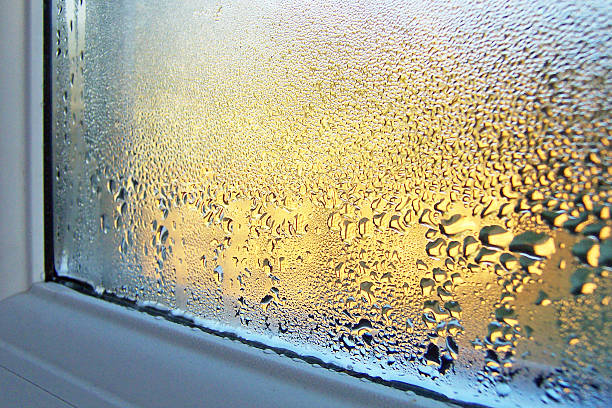
The previous heat vapour will flow to the coil that acts as the condenser. The indoor coil will turn into heating mode, whereas the outdoor coil will switch to cooling mode.
At the same time, the fan will blow air and the water is pumped throughout the coil, carrying the heat with it. The heat will increase in temperature, and the refrigerant condenses into a high-pressure liquid.
3. Expansion or Cooling Down
The liquid refrigerant flows through the expansion valve, lowering its pressure. The refrigerant becomes a cold mixture of liquid and vapour.
4. Heat Absorption (Evaporation)
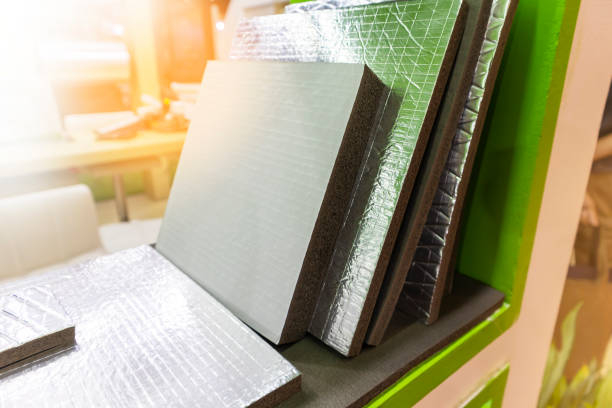
The cold refrigerant enters the evaporator coil again. Air or water passing through the coil will give up its heat to the refrigerant, which will be boiled into low-pressure vapor. In the process, heat is absorbed.
5. Cycle Repeats
The low-pressure vapour returns to the compressor, repeating the cycle from step one.
So, that’s how a heat pump works. To make it easy, I’d think of it as a “heat conveyor belt”, providing cooling and heating into what makes our home, home (or even an office).
Tips on Heat Pump Management
If you find that your heat pump is not working as intended, the problem might not be in the device, but in the settings. Try out the following:
1. Reverse Valve Switching
When you switch from heating to cooling mode (or vice versa), the reversing valve flips the flow direction. The indoor and outdoor coils swap roles. The condenser becomes the evaporator, and the other way around.
2. Check Valves and Filter Drier
The check valves make sure refrigerant only flows the correct way, depending on the mode. The bi-directional filter drier protects the system no matter which way the refrigerant flows.
Types of Heat Pump
Do you know that there are different types of heat pumps? For sure, you don’t want to use an industrial-grade tool for your cozy residential building. I’ll give you some guidelines to tell them apart.
- Air-Source Heat Pumps (ASHP). The most common type of heat pump, relatively easy and inexpensive to install. It comes in two variations: air-to-air and air-to-water. The former blows warm or cool air directly into rooms. The latter heats water for pools, radiators, and underfloor systems.
- Ground-Source Heat Pumps (GSHP or Geothermal). This pump transfers heat to and/or from the ground, using buried pipes or boreholes where temperatures are stable. They do the job well for newer installations and larger buildings.
- Exhaust-Air Heat Pumps (Heat Recovery). There are two forms of this. Exhaust air-air transfers heat to the intake air. Exhaust air-water transfers heat to a water circuit instead, such as a hot water tank. At the end, exhaust air leaves the building through mechanical ventilation.
- Solar-Assisted Heat Pumps. It combines a heat pump with solar thermal and/or PV panels for an environmentally friendly operation, since it produces less carbon footprint. In solar pool heating, for instance, the panel preheats the air or fluid that enters the evaporator. Alternatively, they can generate electricity to power the heat pump.
- Water-Source Heat Pumps. It works like a ground-source unit but draws heat from a lake, river, pond, or aquifer. It can handle heat exchange without freezing or harming wildlife, making it suitable for places with stable water sources.
There are also other emerging types of heat pumps. Thermoacoustic heat pumps, for instance, use sound waves in a sealed chamber without refrigerant to create a temperature difference.
There’s also the electrocaloric heat pump, which is a solid-state device that changes temperature under an electric field, also without a conventional refrigerant.
If you still don’t know which heat pump to go with, base your decision on the factors below.
For context, COP refers to the Coefficient of Performance. This metric measures the efficiency of a heat pump or air conditioner by comparing the amount of heating or cooling you get VS the amount of electricity you use. The higher the COP, the better, since that means lower energy use and smaller electricity bills.
| COP or Energy Efficiency | kWh | Main Applications | Key Advantage | |
| Air-Source Heat Pump | COP 2-5 in mild weather;COP 1-4 at ~−8 °C (18 °F). | 4 kWh of heat per 1 kWh of electricity | Individual houses, flats, and small buildings | Lower upfront cost, easy installation |
| Ground Source Heat Pump | COP 3-6 | 3-6 kWh of heat | New builds, large homes, schools, offices | Stable output across seasons |
| Water-Source Heat Pump | COP 3-6+ | 3-6+ kWh of heat | Sites near lakes, rivers, aquifers, district heating | High efficiency if water is available; no drilling |
| Heat-Recovery Exhaust-Air | COP 2-4 | 2-4 kWh of heat | Ventilated buildings (apartments, offices, or hotels) | Reuses waste heat from exhaust air to preheat or intake water |
| Solar-Assisted Heat Pump | COP 3-6+ (boosted by solar power or heat) | 3-6+ kWh plus free solar kWh | Homes, greenhouses, pools with panel space | Cuts running costs and emissions while protecting the outdoor unit |
Also Read: Air Conditioners vs Heat Pumps: Which One is Good for Your Home?
FAQ
Have questions aside from how a heat pump works? Let’s address them.
What are the disadvantages of a heat pump?
Every type of heat pump shares its pros and cons. Some heat pumps have higher initial costs, while others might generate louder noises. Certain heat pumps also have a shorter lifecycle than traditional gas furnaces.
Heat pumps also depend on electricity, so running costs can rise during rising periods. At times, a heat pump installation can get so severely complex that it must be done by an experienced professional.
How does a heat pump VS air conditioner compare?
A heat pump focuses on both cooling and heating. Meanwhile, an AC only provides cooling. Furthermore, heat pumps have extensive applications aside from just cooling or heating the room like an AC does.
It also maintains heat in showers, baths, swimming pools, and spas. It also plays a role in industrial and commercial applications. Large heat pumps recover waste heat from factories, data centres, or sewage plants to power the entire district.
Do heat pumps work with radiators?
Yes, heat pumps can actually increase in operation when paired with radiators, specifically those that come in larger sizes.
This is because heat pumps operate at lower water temperatures than traditional boilers. If the radiator has more surface area, it’ll be able to release enough heat to keep rooms comfortable despite the lower-temperature water.
Conclusions
So, how does a heat pump work? There are 5 stages: compression, heat release, expansion, heat absorption, and finally, the cycle repeats. Heat pumps are not only important for homes, but also for offices, factories, and industries.
Understanding how each component works and the different types in store will help you choose the right system for your needs.
If you’re in Sydney and want to enjoy a perfectly heated room or pool year-round, talk to the experts at Lightning Bult. We provide professional solutions for every type of heat pump and budget.



